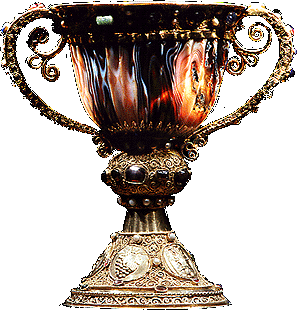

|
There is another striking feature to the cathedrals. It can be verified through simple examination of the literature, that gothic architecture has gradually been classified into 4 distinctive building modes or periods. This fact becomes more amazing when one looks closely at the principles that were used in its constructions. It is generally agreed that Platonic ideas were heavily relied upon. Plato was a latter-day Pythagorean. If this can be established, then the actual manifestation and growth of the form into its various styles becomes much more significant. It is known through Plato (Timaeus and Critias) that the Pythagoreans described the nature of the universe and all in it through four elements or what might be better denoted by the word "principles". A fifth principle described the entirety of the world in perfection. The four phases of (French) gothic are now commonly known as : 1. Primitive 2. Classic 3. Rayonnant 4. Flamboyant. By closely examining the inner characteristics of each of these four distinctive styles, one gets a definite sense and feeling for each style's uniqueness. Direct experience is the only real test for verifying the following proposition. According to these experiencers' set of experiencings, it suddenly loomed obvious that the entire sequence of the gothic form from conception, growth, expansion and termination was an exactly correspondent manifestation of the "Perfect Solids" of Pythagoras, except in reverse order. For example, the primitive would correspond to the symbol for earth, the cube. Being in a primitive gothic environment one can certainly attest to the heavy solid quality in these structures. Lyon and Noyon are superb examples. The classic gothic would correspond to the symbol of the icosahedron, or water. In this period, most of the truly great cathedrals such as Chartres, Bourges, Rheims and Amiens were developed. It was the time when stained glass was first extensively used to flood the interiors with the multi-colored splendor of its patterns. Fluid lines both in the architecture and glass break out of the rigid geometry of the primitive. The feeling in these spaces does not diverge from the basic attributions given to the term water. The third style, rayonnant, was a phase of synthesis, and being within it one has the perception of a dynamic expansion in focus. This pattern projects the presence of two distinct factors trying to be balanced within one framework. By combining the qualities of the straight-line primitive and the graceful curvature of the classic, a hybrid form was achieved whose chief feature was elasticity: vaults became stretched to the limit, walls of stained glass replaced stone, and in the roses, petals became fans. The octahedron represents the element of air, whose main characteristics are expansiveness and circulation. A rayonnant church or cathedral (the Ste. Chapelle, St. Ouen, Beauvais) impresses one with these unmistakable qualities. The flamboyant form's flame-like patterns blazed throughout the final gothic era. This style is the most direct expression of an element, in this case the Divine Fire, represented by the tetrahedron of the Greeks. Some examples are St. Maclou, St. Richier, the north transept of Evreux. The sense of the connection between these principles and their manifestation through the gothic forms (architecture and the glass designs), and the fact that they can be acknowledged and experienced, makes this line of reasoning all the more plausible. Was this alignment and demonstration intentional/conscious, or was it a natural development of working with the geometric-mathematical principles themselves? Or, implicate to these symbols is there a viewpoint in which there is no distinction between what is "natural" and what is "conscious"? And what of the last perfect solid, the dodecahedron, the solid made up of 12 pentagons? It represents the ether, or holy spirit, or the perfected man through stages. Where has the manifestation of this symbol appeared on the planet? And then, once again it becomes obvious that this particular generation in form is pointing to that which is beyond that form. If one knew what each of the twelve pentagons really represented, one could derive the exact manifestations that each of these would take to produce a "whole and complete" Picture of the Universe. If the gothic cathedrals were only one of the twelve aspects that would manifest a complete picture of the universe, then the other 11 must also be manifest in some form, somewhen, somewhere, someone. It would appear that the twelve "pentagons" must co-exist at once. So existing at any given time, there must be 11 other manifestations of this principle that are identical in form, although different in appearance to that which is expressed through gothic Christianity. This means equally intense, equally developed and especially equally balanced in terms of the parts to the whole. If one were to find these "externalized" manifestations, work with them in relation to one's "internalized" metaprograms and totally integrate the one with the other, one would become/be a manifestation of that symbol of the universe, the dodecahedron, also known as the Christ. From the perfect polyhedron comes co-emergence with the absolute vacuum state of the crystal sphere beyond which is nothing and within which is nothing. |
Back Next Next |